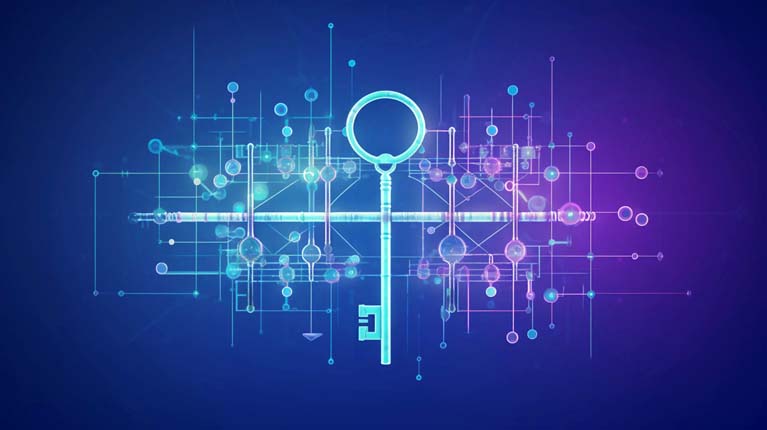Data protection involves safeguarding critical information against compromise, including theft, loss, or unwelcome intrusions during its entire lifecycle.
The prevalence of data breaches is an ongoing challenge for businesses worldwide. According to a ThoughtLab study, there was an escalation in data breach incidents and cyberattacks by 15.1% in 2021 compared to the previous year. Incidents of this nature do more than just put sensitive company information at risk; they also expose corporations to potential litigation and substantial penalties.
Implementing robust data protection protocols and deploying advanced security solutions are crucial measures to prevent internal stakeholders from misusing or mishandling precious data resources.

Table of Contents
Types of Data Security Technology
1. Encryption
Transforming data into a secure code, known as ciphertext, provides protection both when stored and during exchange between authorized individuals. This encryption process guarantees that only those in possession of the correct decryption key can access the original, readable form of the data. If intercepted by unauthorized entities, encrypted data remains indecipherable and useless.
There are two primary types of data encryption methods:
- Public Key Encryption – also known as asymmetric encryption
- Secret Key Encryption – also known as symmetric encryption
To safeguard data while it is not actively in use—referred to as ‘data at rest’—endpoint encryption is employed. This can be implemented through methods such as file encryption or encrypting the entire disk.
2. Virtual Private Networks (VPN)
Virtual Private Networks (VPNs) provide a safeguarded pathway for accessing a private network from a remote location via the internet. This technology is crucial for remote employees who need to securely reach corporate data and internal systems from outside the office. VPN provides data security in different ways and uses several technologies for this. A key security tool is data encryption. There is also access control, traffic anonymization functions, hiding IP and DNS addresses.
Just be sure to ensure that the VPN offers applications for all platforms on which you plan to use it. For example, Apple TV VPN is not available on all providers. There are universal providers, like VeePN, which have the widest possible platform coverage.
3. Identity and Access Management (IAM)
Stay safe and in control with smart solutions that handle who can see and use your organization’s important information. These tools make sure only the right people can get to data they need for their job, protecting against unwanted access.
4. Intrusion Detection and Prevention Systems (IDPS)
Ever wonder how online data stays safe from hackers and viruses? That’s where IDPS come into play. Think of IDPS as the guardians of the internet highways, they check the flow of data zooming across networks to spot any signs of trouble – like someone trying to break in or cause harm.
These smart systems are always on the lookout, analyzing information as it comes and goes to catch anything out of the ordinary. Consider them your digital sentries; their main job is to protect against cyber nasties such as malware – those sneaky pieces of software that can damage your computer, or viruses that can spread and infect at lightning speeds.
They’re super important for anyone who handles sensitive information online – whether you’re a business, a government, or just someone with an email account filled with personal details. IDPS should be like doorbells to the entryways of your network, watching who comes in and out, and making sure no uninvited guests sneak through.
5. Data Backup

To bolster their defenses against data compromises and other critical incidents, enterprises must maintain multiple data replicas—that’s a non-negotiable in today’s digital-first world. The presence of robust data backups empowers organizations to spring back into action swiftly and smoothly post-crisis. Maintaining business continuity hinges on not just having backups but also safeguarding them to ensure they’re at the ready when disaster strikes.
Take data vaulting as a prime example—it’s a method where backups are kept isolated, or ‘air-gapped’, away from the primary network. This is a kind of digital fortress, guarding precious data against virtual sieges. Alongside that, implementing the time-tested 3-2-1 backup policy is critical; it stipulates that you should have a minimum of three separate copies of data, stored in two different forms, with one copy situated off-site for added security.
6. File Integrity Monitoring (FIM)
File Integrity Monitoring, commonly known as FIM, acts as a vigilant guard over your file systems. It meticulously establishes a standard for the files and directories on your system and alerts administrators at the slightest hint of modification. This proactive approach is indispensable for thwarting unauthorized alterations to your critical data, safeguarding essential files and folders from undesirable interference.
For businesses navigating the complex terrain of compliance with regulations like HIPAA, PCI DSS, and SOX, FIM is nothing short of a necessity. It’s not just about overseeing changes—it’s about ensuring that every change to configuration settings or key system files is legitimate and sanctioned. FIM isn’t limited to keeping an eye on system changes; it also offers oversight for privileged users, providing a robust mechanism to catch any improper access or adjustments that slip through the cracks.
Conclusion
Security technologies may have different formats, but all of them, in one way or another, help build a multi-level system of defense against hackers. Some act as preventive measures, while others prevent data loss in the event of a hack. This does not diminish the role of either the first category or the second. Both strategies must be implemented.
